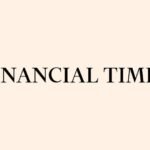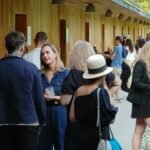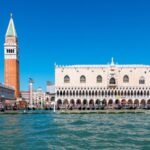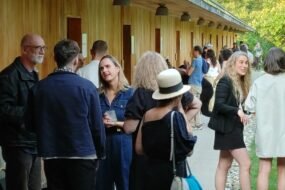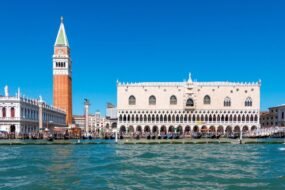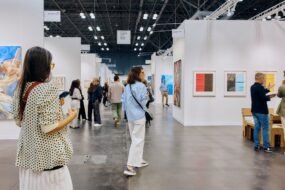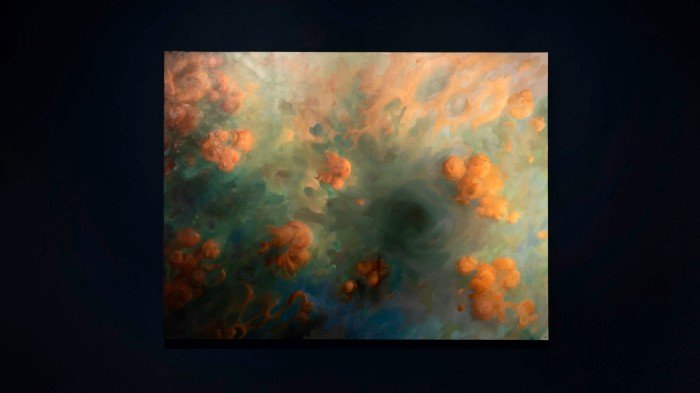
Unlock the Editor’s Digest for free
Roula Khalaf, Editor of the FT, selects her favourite stories in this weekly newsletter.
London’s newest gallerists are as passionate as their predecessors about the art they sell, but seem more pragmatic about their prospects. “Getting rich quick is now out of the question. The newer generation knows there is an opportunity but that we need to work hard, it is a marathon,” says William Hine, who opened his eponymous gallery in Camberwell, south London, in October 2024. Sarah Le Quang Sang, who opened SLQS Gallery in Shoreditch this year, describes her venture as “a long game”.
They are among the 15 first-timers in this week’s London Gallery Weekend, which this year galvanises 126 of the city’s contemporary art spaces for its fifth edition (June 6-8). Most have opened in the past two years, coinciding with post-Brexit red tape, a more sombre international art market, and wider economic and sociopolitical turmoil. “It is really tough out there right now, the market has contracted significantly. But in a way it is a blessing — we’ve never known anything other than swimming upstream so have no unrealistic metrics,” says Louis Blanc-Francard, who opened Fitzrovia’s Lbf gallery with his wife Lena in late 2023. Maribelle Bierens, whose nearby Night Café gallery opened in the same year, agrees. “I don’t have any experience of a previous boom so started out already cautious,” she says. Her philosophy is that “in this really fast-paced world, when something is done in a considered way, it can really stick.”
Many have found a niche to help stand out in a still-crowded field. SLQS’s programme centres around female and queer artists and, for LGW, the gallery fields a show of three Vietnamese and Vietnam-diaspora practitioners. This includes delicately embossed aluminium images that are recreations of 1980s photographs of refugees in Hong Kong, by Duong Thuy Nguyen. William Hine shines a light on British artists who have had acclaimed, regional exhibitions but are less known on the international market. His LGW exhibition is of entangled ceramics and works on paper by the Scottish artist Rae-Yen Song whose largest solo institutional exhibition to date opens at Tramway, Glasgow in November.

Quirky visual experiences seem part of the plan — Lbf is in a mews building by the BT Tower with high ceilings that mean artists “can be as experimental as possible”, Blanc-Francard says. For LGW, a four-part painting by the London-based artist (and NHS doctor) Gaia Ozwyn curls up the wall and includes one panel pinned to the ceiling. Night Café, Bierens says, is an “odd-shaped”, almost triangular space unafraid of its interrupting beams. Here she shows paintings of jarring cloud formations by the Dutch artist Mandy Franca, made while the artist was bed-ridden for a year with long Covid.
Keeping costs down has become a priority for the latest gallerists. “I’m quite business savvy,” says Lucca Hue-Williams, who opened Fitzrovia’s Albion Jeune officially in 2023 and is on LGW’s VIP Programme Committee this year. London rents are still the biggest outlay for most while shipping costs are increasingly prohibitive. “I ask for competing quotes on absolutely everything. It isn’t why people join the art world but is an increasing part of our job. Most of my artists are from overseas and showing in London for the first time,” she explains. For LGW she has a group show of seven New York-based artists who challenge ideals of beauty and order.

All the latest gallerists are keeping it small, with minimal overheads extending to staff. “When you come to the gallery, you get me,” Hine says. They also have a measured approach to doing art fairs, which, while seen as important, can eat into valuable time and funds. “Two bad fairs could bankrupt you,” Blanc-Francard says. They are conscious, too, not to oversaturate increasingly discerning buyers. “We won’t do shows for the sake of it. If we don’t have something of the highest quality then we take a month off, we won’t fill the gallery with a group show that has no purpose,” says Lucas Kearsey, who co-founded Kearsey & Gold on Mayfair’s Cork Street last year. For London Gallery Weekend, they have a show of the young Swiss-born, London-based Filippo Antonello, who uses bleach and ink to rework surfaces made from materials such as velvet and denim.
Outside of LGW, there are other newcomers set to liven up the capital’s cultural credentials this week. Nestled among its clothes and changing rooms, the fashion store Paul Smith, which opened a gallery in its flagship Mayfair shop last year, has an exhibition of reimagined 18th-century caricatures by the British artist Charlie Billingham (until June 15). This week also marks the opening of the South by Southwest (SXSW) festival, the first European outing for the Texas music and tech experience, and the first time that visual art has been a part of the programme. This includes an immersive exhibition of London artists from the Caribbean diaspora (Christchurch, Spitalfields) and a show where art meets technology, featuring work by Beeple, poster boy of the non-fungible token craze (Protein Studios, Shoreditch). “The [broad-ranged] programme reflects what it means when we say London is a global art centre,” says SXSW visual arts adviser Beth Greenacre.

For the latest crop of cost-conscious creatives, it’s a much-needed revival. “After Brexit, Paris took people’s eyes off London, then there was a seeming exodus of millionaires. But London has the most incredible concentration of talent, and it is when the eyes are off that there’s an opportunity,” Kearsey says. The LGW fixture, which attracts local and overseas attention, is a boon, he adds: “There are two weeks of the year here when everyone really gets together and the city comes alive, Frieze Week and London Gallery Weekend.”
Today’s serious-minded gallerists seem prepared to stay the course. “No one knows what the future will bring, but if you are doing it for the right reasons and within your means, then hopefully it will work out,” Hine says. Le Quang Sang says that “now is about building a following. It takes time, but when the market picks up again, we will be strong.”
June 6-8, londongalleryweekend.art

